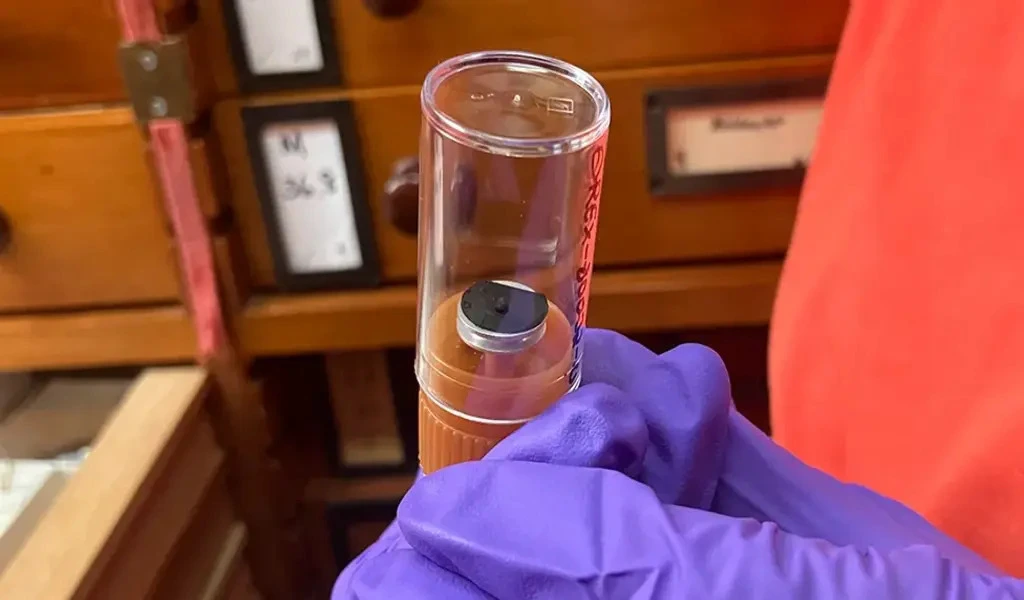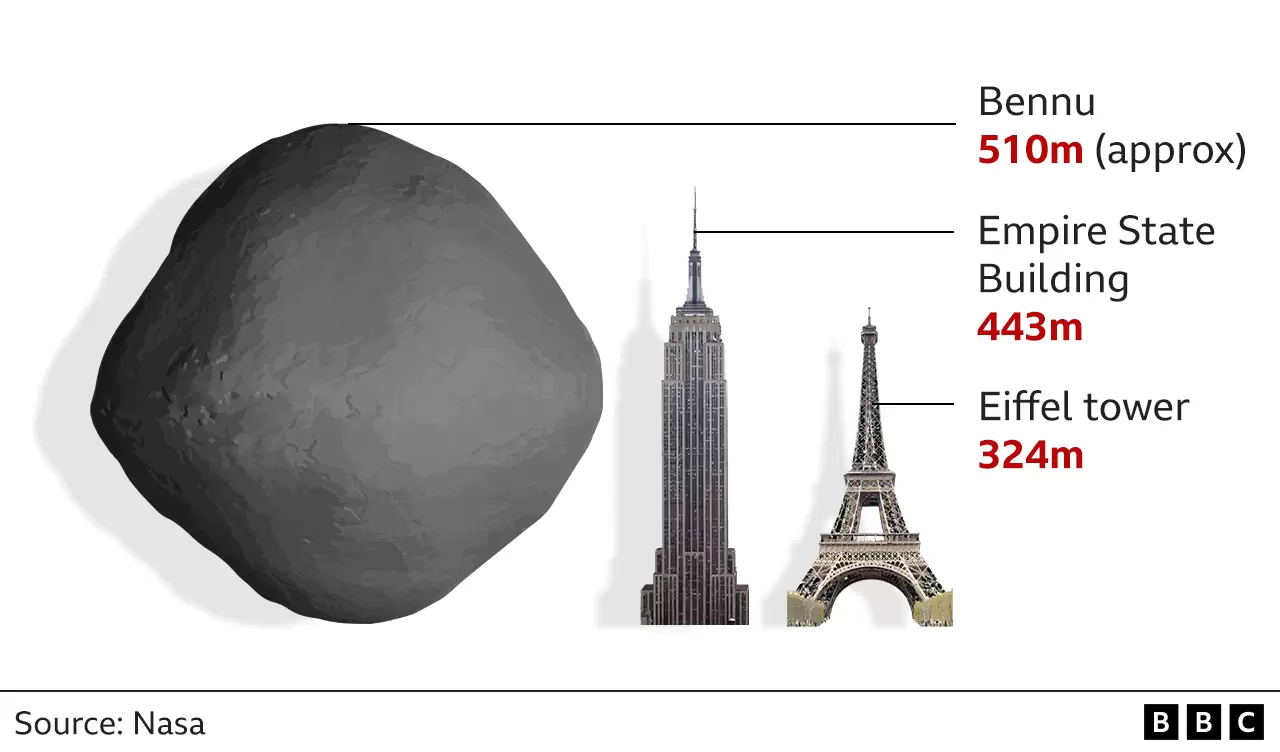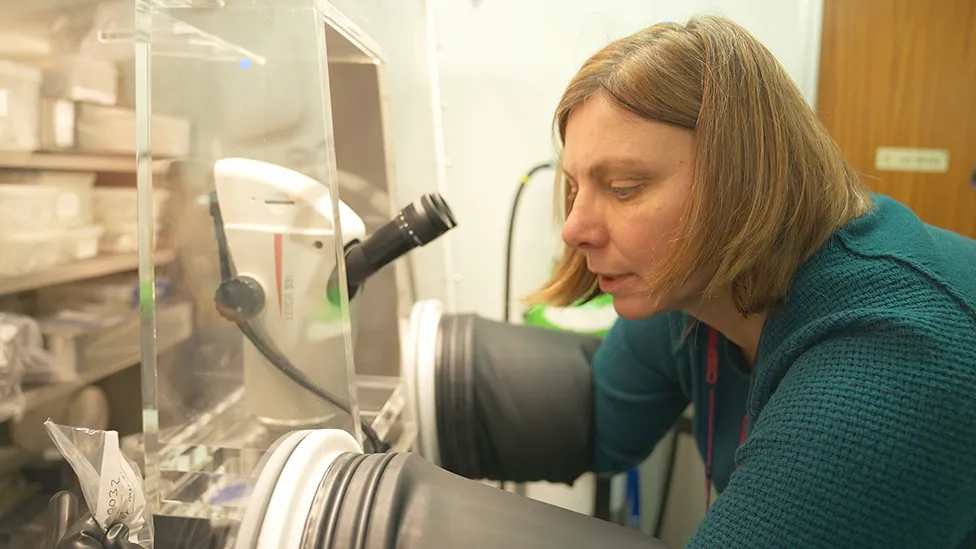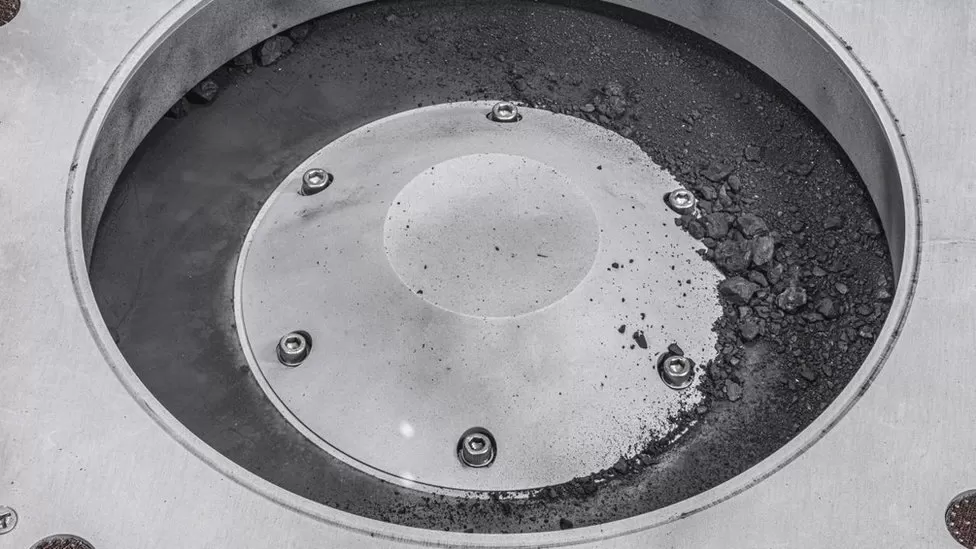(CTN News) – Cometary dust from the Solar System’s most hazardous asteroid has made its way to the United Kingdom for analysis, according to the National Aeronautics and Space Administration (NASA).
At the Natural History Museum and at the universities of Oxford, Manchester, and the Open, the minute rock and dust grains from the object called Bennu will undergo a battery of tests.
The NHM’s Prof. Sara Russell thinks it’s a generous, but modest, donation.
Telling BBC News that it was “one hundred milligrams of beautiful” was her phrase.
Two months ago, Nasa’s Osiris-Rex spacecraft transported the sample to the Utah desert in a capsule from the surface of the 500m-wide asteroid Bennu in 2020.
Since the mountainous object may collide with Earth over the next three hundred years, the US agency is interested in gathering more information about it.
On top of that, the sample might shed new light on how the Solar System came to be some 4.6 billion years ago.
Nasa’s Osiris-Rex Capsule Delivers Bennu Fragments to UK Universities
Since the chemistry of Bennu material has not altered much over the years, this new information can be obtained there.
Hundreds of scientists from all across the globe are contributing to the probe.
For instance, X-ray diffraction (XRD) methods are an area of competence for the NHM group.
They will show you what kinds of minerals and how much there is.
“We’re unusual in that we have an XRD set-up that allows us to do experiments that others maybe can’t,” remarked Dr. Ashley King of the museum.
“We also have an incredible minerals collection which means we have all the standards and can do the comparisons that will help us with our calculations.”
Although Dr. King has access to various tools at his West London institution, he will also be using the country’s largest XRD machine, located in Harwell, Oxfordshire’s Diamond Light Source.
Diamond, about the size of a football stadium, generates dazzling X-ray beams that offer unprecedented sensitivity and resolution.
A preliminary examination by Nasa with Dr. King’s help revealed that the alien Bennu material, which was black in color, included minerals rich in carbon and water.
It’s encouraging. According to one idea, Bennu and other water-rich, carbon-rich asteroids may have played a role in supplying the early Earth system with essential components. From this source, we may have gotten the water for our seas and the chemicals needed to start life.
It doesn’t sound like the UK got much of the 100 mg. The biggest pieces are smaller than 2 millimeters, and you can hardly see the tiniest ones with your own eyes.
According to Professor Russell, head of the museum’s planetary materials section, “It’s only a teaspoonful, but if you imagine a teaspoon of sugar and how many individual grains there are in that – we are going to be looking at this material grain by grain.”
“It could be a lifetime of work ahead of us.” There is a lot more wiggle room at Nasa. No one knows for sure how much.
The Osiris-Rex sample container has not been completely opened yet. No amount of screwing can remove an enclosing plate. New tools need to be qualified to finish the work, according to the agency’s curation team at the Johnson Space Center in Texas.
The 100 milligrams for the UK came from 70 mg that had leaked out of the container during its encapsulation process for its return to Earth.
Since 70 grams is 10 grams more than the mission’s minimum when financed, there’s no need to rush to liberate the remaining pieces, which may add another 200 grams.
At the Lunar and Planetary Science Conference (LPSC) in March, scientists from around the globe, including Britain, want to present their preliminary findings. Meteoritics & Planetary Science also plans to publish two large overview articles simultaneously or soon after.
The majority of the Bennu sample will be archived by NASA immediately so that it can be studied by scientists who may never have been born but who will use equipment that does not yet exist in laboratories that do not exist today.









